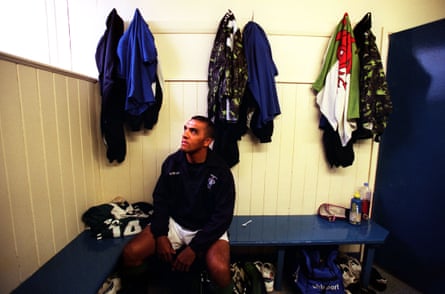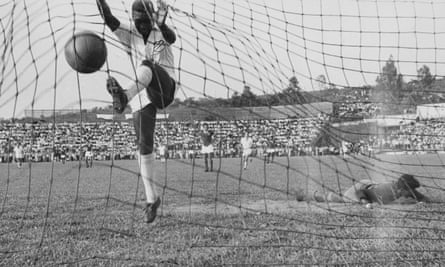“In the 1975 FA Cup, I was surprised that in the quarter-final that season Ipswich and Leeds had taken four games to resolve their tie, with a total attendance of 143,000. My question is: which is the tie with the highest total attendance?” asks Nicholas Idoine.
“As the FA recently bowed to the Premier League and replays are to become a thing of the past, I was intrigued by this question and consulted 11v 11.com and Marching on Together websites to come up with an answer,” begins Michael Haughey. “The match quoted between Ipswich and Leeds (142,849) was seen by fewer people in four games than the 154,201 who saw the three games it took to settle Leeds v Sunderland in 1967. This included Elland Road’s record crowd at the replay.
“Apart from the FA Cup finals of 1981, 1982 and 1983, which went to replays, I dug into the slog-fest of cup ties with multiple replays. The marathon semi-final between Arsenal and Liverpool in 1980 went to four matches, in front of a total of 169,083 spectators. The previous season, 143,996 watched Arsenal v Sheffield Wednesday over five matches, including three games at neutral Filbert Street. But Arsenal take the biscuit with the 183,197 who saw them tumble out in the third round in 1947 to Chelsea after three games with a second replay at White Hart Lane. All in the days when replays kicked off on Wednesday afternoons.

“Surprisingly in the much-maligned League Cup, 171,334 watched the two legs and two replays of the semi-final between West Ham and Stoke City in 1972.”
Tim in New York widens the net to offer “the 1998 World Cup qualifier between Iran and Australia, which drew 190,000 over two legs (100,000 in Tehran, 90,000 in Melbourne)”. And if we take the question into Scotland, Vincent Connolly can top even that. “Celtic and Rangers drew 1-1 in the 1971 Scottish Cup final in front of 120,092, then Celtic won the replay 2-1 where the crowd was 103,332. A total of 223,424. Surely should be close to a winner?”
Even if we look at English FA Cup final replays at Wembley, we can’t beat that total, Vincent. The replayed Manchester United v Brighton final in 1983 brought the attendance to 190,593 but the year previously the official crowd at Wembley for Tottenham v QPR was recorded as 100,000 for both the final and the replay, so 200,000 all in. It doesn’t beat Celtic-Rangers in 1971.
Second-tier stalwarts who never made it to top
“Who has made the most Championship appearances without ever playing a game in the top flight?” wonders Michael Bond.
Dan Seppings has done the hard yards on this one for us. “I took ‘Championship’ to mean second-tier as football wasn’t invented in 1992, etc and so on. Anyway, the results are as follows:
Tony Ford 506 second-tier appearances of 931 in total
Dele Adebola 489 of 639
Wayne Allison 482 of 752
Mike Keeping 470 of 470
Paul McKenna 469 of 554
Simon Garner 464 of 594
Richard Keogh 457 of 626
Don Goodman 456 of 515
Luke Chambers 455 of 791
Tom Lees 454 of 538
Matt Bell 453 of 478
David Holdsworth 445 of 445
Barry Kitchener 444 of 523
Paul Groves 442 of 627
Keith Peacock 434 of 533

“Some of these players are worth a disappearance down a Wikipedia rabbit hole. Tony Ford has made more Football League appearances (931) than any outfield player. Ever! Dele Adebola was picked for both the Northern Ireland and Nigeria national squads without being fortunate enough to get a cap. Keith Peacock was the first ever official Football League substitute … and he was Gavin Peacock’s dad. Fred Keeping was a future Real Madrid manager and his dad was a medallist in the first ever modern Olympics in 1896. David Holdsworth became the first person to manage in a league match against his own twin, Dean. Anyway, proof that lower-league football is miles more interesting than this top-flight malarkey.”
Top-scoring in a division for longest streak
“What’s the longest streak of a player being top scorer in the same division?” asks Aaron. “Has someone managed 12-plus seasons consecutively?”
Dirk Maas likes a challenge. “This question is almost impossible to answer, but thanks to RSSSF, I thinks it’s Pelé, who became top scorer of the Campeonato Paulista, the top-flight professional state football league in the Brazilian state of São Paulo, nine times in a row between 1957 and 1965.”

“The only other player who can match Pelé’s feat of nine consecutive top scorer titles is Josef Bican. Between the 1937-38 and 1946-47 seasons (in 1944-45, Bican didn’t play league football as no championship was held because of the second world war), he became top scorer of every top division, Czechoslovakian and Bohemian-Moravian, he played in. But, due to the political turmoil in the 1930s and the 1940s, these leagues weren’t always Czechoslovakian.”
Renard’s remarkable run of consecutive titles
“Last week you reported on a player who had won 14 consecutive titles in the Gibraltarian league,” writes Dave Mellinger. “In my email to you last week, I missed the fact that this has been equalled in a somewhat more prominent league: Wendie Renard has played for Lyon her entire professional career, including their run of 14 consecutive Division 1 Féminine titles from 2006-07 through to 2019-20.”

Knowledge archive
“I was recently watching the third Test between India and West Indies,” wrote Manas Phadke in July 2011. “I was quite surprised to see Billy Doctrove (who is an umpire) sitting in a stand named after him wearing a Liverpool jersey and kissing the badge for the cameras. Are there any other umpires in international cricket (present or past) who have publicly pledged their allegiance to a football club?”
Roy Proctor was on hand with a few answers. “The most obvious cricket umpire to have a publicly acknowledged football affiliation is the incomparable Harold ‘Dickie’ Bird, who, in an article for the Guardian in 2008, proclaimed: “I’ve supported Barnsley for 70 years so there’s no way I will miss this afternoon.” The afternoon in question was an FA Cup quarter-final between the Tykes and Chelsea, a match that Barnsley won. “Another, more current, umpire is Ian Gould, a wicketkeeper who played in goal for Slough Town and Arsenal, earning him the nickname ‘Gunner’. In July 2009, Gould became chairman of Burnham FC of the Southern Football League. And although I’m not sure which team he supports, the legendary West Indian umpire Steve Bucknor, like Gould, was a goalkeeper, playing for Jamaica at schoolboy level. He went on to be a referee and took charge of a World Cup qualifier.”
Can you help?
“Is there a league in the world where the same player holds the record for being both the youngest and the oldest goalscorer?” asks Harry Dawson.
“All the teams that reached, and lost in, the League One playoffs last season (Peterborough, Bolton and Barnsley) have reached them again this year. Has this happened before?” ponders Tom Davies.
“Given we’re in the late-season period of a bit of managerial merry-go-round … at a low, organised (some would say disorganised) level, five- and six-a-side teams often just sort themselves out,” writes Stuart Goodwin. “Many regular kickabouts take place where it’s 11 v 11 and nobody’s particularly in charge – not even a captain on each side. Since the late-1800s era of William Sudell and George Ramsay that brought about what we now know as club managers, are there any notable examples at pro or semi-pro level where a team hasn’t had any kind of managerial presence either on the sidelines or as a player-manager? Since managers became the norm, what’s the highest level where such a team has appeared, and what’s the highest level where two such teams have met?”
“Huddersfield Town have just completed an entire season without being awarded a single home penalty,” writes Roger Pashby. “That’s now three consecutive full seasons. You can even throw in Cup games too! The last home penalty was awarded against Cardiff on 5 March 2021, and missed by Yaya Sanogo. That was during the Covid pandemic so the ground was shut at the time. You have to go back to 25 February 2020 and Karlan Grant’s penalty against Bristol City for the last time any paying customer saw Town take a penalty at home. Surely no professional club can match this appalling statistic.”
Source: theguardian.com


